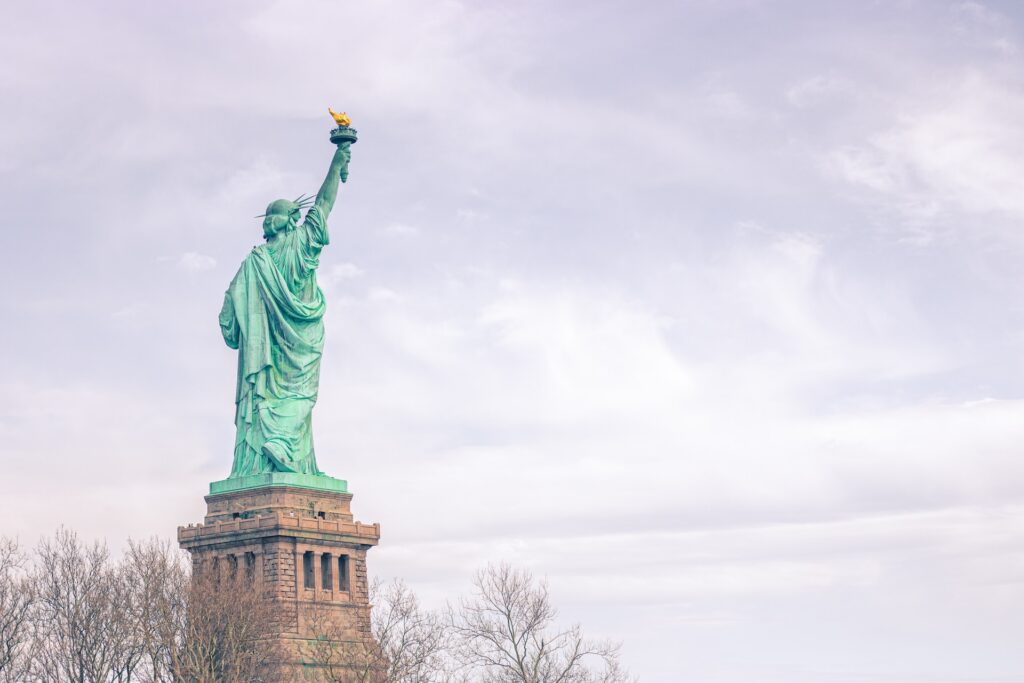Beginnings of the emblematic city NY
The first explorer to glimpse the island of Manhattan in 1524 was the navigator Giovanni da Verrazzano in the service of the French crown. The area, which he called New Angoulême, was inhabited by the Algonquian and Iroquois Indians.
The second to explore the bay was the British Hudson in 1609, in the service of the Netherlands, who gave his name to the river.
The Dutch were the first Europeans to settle in the area and in 1614 they built Fort Nassau, the first European settlement in the area of present-day New York.
In 1626, Peter Minuit, governor of the Dutch West India Company, bought the island of Manhattan from the Indians for $24 and created a colony he called New Amsterdam. The colony specialized in the fur trade with the Indians.
In 1674, by the Treaty of Westminster, the island of Manhattan passed from the Dutch to the English, who renamed it New York in honor of the Duke of York. With the neighboring colonies, the English formed New England.
With the presence of the English, New York gained importance and prosperity as a commercial port, and in 1754 Columbia University was founded, currently one of the most prestigious in the world.
New York played an important role in the American War of Independence, being the scene of several battles. In 1775, revolutionaries opposed those loyal to England and approved independence the following year.
However, the state of New York did not ratify the federal constitution until 1788.
After the war, Congress met in New York and named George Washington president in 1789, and it was the federal capital for a year until it was moved to Washington D.C.
In the 1820s New York became the center of Northern abolitionist activism. In 1863, during the American Civil War, New York experienced a civil insurrection with very violent demonstrations against forced enlistment, known as the days of “draft week.”
Immigration and development transformed the city, such that in 1835 New York became the largest city in the United States.
Until 1898, the city consisted only of Manhattan, which was joined by the boroughs of Brooklyn, Queens, the Bronx and Staten Island. The construction of many of its famous bridges and the subway in 1904 contributed to this.
During the 20th century, New York has not stopped growing. The Statue of Liberty has witnessed the arrival of millions of immigrants (in 1948 it already surpassed London as the most populated city in the world). New York became the center of European, Asian and Latin American immigration.
After the Second World War, New York became the most important city in the world with great economic (Wall Street), political (UN headquarters) and cultural weight (it replaced Paris as a mecca of art and culture). It has also become a great international tourist destination.
The history of New York was dressed in mourning after the criminal attacks of September 11, 2001, from which new security standards were established both in New York and in the rest of the world.
Today, New York is the dream destination of travelers from all over the world thanks to its appearance in hundreds of books, movies and series.
The city is made up of five boroughs: the Bronx, Brooklyn, Manhattan, Queens and Staten Island, each of which coincides with a county: Bronx, Kings, New York, Queens and Richmond. With more than 24 million New Yorkers in an urban area of 830 square kilometers (320 mi²), New York is the second most densely populated city in the United States, behind only Union City, New Jersey, located on the other side of the Hudson River.9 Along with Geneva, Basel and Strasbourg, New York is one of the few cities in the world that is home to several international institutions without being the political capital of a state.10
The city has many places and buildings recognized around the world. For example, the Statue of Liberty, located on the island of the same name, and Ellis Island, which received millions of immigrants arriving in the United States at the end of the 19th century and the beginning of the 20th century. Wall Street has been one of the world’s leading centers of finance since World War II and is home to the New York Stock Exchange.
The city is also home to many of the tallest buildings in the world, including the Empire State Building, One World Trade Center, the Chrysler Building, 432 Park Avenue, Trump Tower, the Seagram Building and formerly the twin towers of the World Trade Center, which were demolished in the attacks of September 11, 2001.11 The city is also the birthplace of many American cultural movements, such as the Harlem Renaissance in literature and visual arts, abstract expressionism (also known as New York School) in painting, and hip hop, break dance, 12 punk and Tin Pan Alley in music. As of 2005, more than 700 languages and dialects were spoken in the city, and 30% of its population was born outside the United States.
We have the unbeatable price of $500 per day for your Billboard:
Option 1: Your 60 second video/photo will be shown, 60 seconds per hour 22 times a day.
Option 2: Your 30 second video/photo will be shown, twice an hour, 44 times a day.
Option 3: Your 15 second video/photo will be shown 4 times per hour 88 times per day.
Please let us know which option you would like to choose. Remember that we have a response time of 72 hours.

